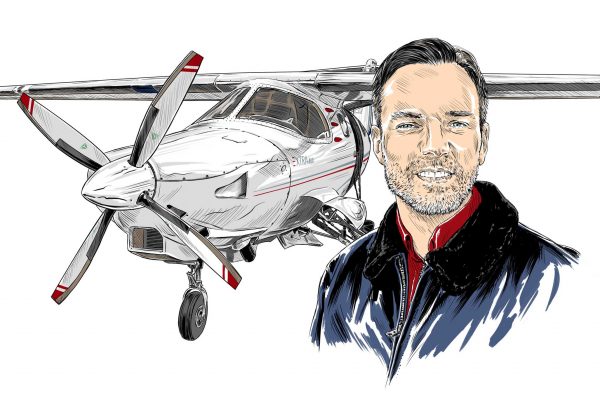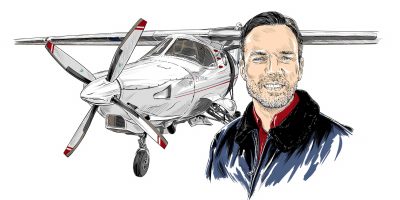With the obvious exceptions of Covid-19 and Brexit, the second half of 2020 was quiet on the regulatory front. As was covered in the last issue we do know that on 1 January 2021 there was no ‘big bang’ of changes associated with the end of the transition period from leaving the EU. Aside from UK issued licences and approvals no longer having their status in the EASA system, the same regulations continue. Over time this will probably change, but it will be a gradual process. For example, the first half of 2021 will likely see the return of the old UK rule that allows ‘clear of cloud’, rather than 1,000ft below it, when operating VFR in Class D airspace below 3,000ft and less than 140kt indicated airspeed.
The agreement of a trade deal with the EU probably increases the future likelihood of some mutual recognition on safety regulations, but I suspect the CAA is carefully studying how that might interact with the intention to diverge from the EASA system where beneficial.
One area in which the UK seems likely to stay aligned with Europe in the longer term is Unmanned Aerial Systems (UAS), or drones as we often call them. Indeed, 2020 was a busy year for UAS, particularly on the regulatory front, with December seeing the introduction of the long-awaited European UAS regulation, which will be applied by the CAA as UK law. The UAS regulation essentially implements three distinct categories of UAS operation, which depending on the complexity and risk, have varying levels of operational authorisation and equipment certification required.
“ The first trial of BVLOS operations alongside manned aircraft will take place at Goodwood in 2021”
Now it might seem odd to discuss UAS regulations in a magazine largely about manned leisure flying, but 2020 saw developments which will influence the way that manned and unmanned aircraft share the sky in the future.
Until now civilian UAS operations have mainly taken place either within visual line of sight of the operator, who has responsibility for complying with the Rules of the Air, or in ‘segregated’ airspace in which operations can take place without risk of conflict with other aircraft. Currently in the civilian world the systems for deconfliction (‘detect and avoid’ as the CAA terms it) with other aircraft when beyond visual line of sight (BVLOS) are in their infancy – although technology exists that could perform that function, the operational deployment of it has not yet happened.
Many readers will be aware of several temporary danger areas which appeared in 2020 to support trials in which UAS operating BVLOS carried small amounts of cargo between mainland Britain and nearby islands, such as the Isle of Wight. The CAA also published a short guide to applying for authorisation for UAS projects designed to support the Covid-19 response. While it may seem concerning that more is being added to the growing pile of controlled and regulated airspace, I think longer term everyone knows that segregated airspace for UAS is not the way forward for operations in areas with any other significant aerial activity. With most current UAS activity staying below 400ft, you might think mainstream GA will not be affected much, but plenty of low level manned activity still takes place, such as helicopter operations and the military. Operations near aerodromes, as needed, must be considered. Given the aspirations for the use of UAS longer term, it does not seem practical nor desirable that temporary danger areas pop up every time a UAS needs to fly beyond sight of the operator. Integrated BVLOS is the real aim.
An early operational trail of integrated BVLOS operations was announced in September 2020 to take place at Goodwood in 2021. This is of interest to GA since it proposes to trial BVLOS operations at a live aerodrome with manned aircraft operations present. To support this, it is proposed that a temporary transponder mandatory zone (TMZ) will be implemented – but unlike most existing TMZs which require Mode S, ADS-B out will qualify for entry. The recent CAA consultation suggesting that ADS-B could be specified as an alternative equipage in TMZs is potentially very significant for GA on its own, but I doubt the timing is a coincidence.
The proposed trial plan involves ADB-S signals from aircraft being collated on a display for the UAS operators to view and direct their craft as required, with regular Mode-S signals being plotted via multilateration. FLARM detection will also be included, although currently it is not proposed that FLARM-only aircraft would be able to enter the TMZ. The collated information will also be on the aerodrome FISO’s traffic display and rebroadcast such that those with ADS-B in capability can receive it.
Electronic conspicuity (EC) is clearly the intended solution to ‘detect and avoid’ between aircraft, manned and unmanned, so unsurprisingly it has been quite a hot topic recently. There is still some way to go before unsegregated UAS operations become routine, but I predict we will see the successful demonstration of the concept in 2021. Now where was I with that EC device rebate application…




